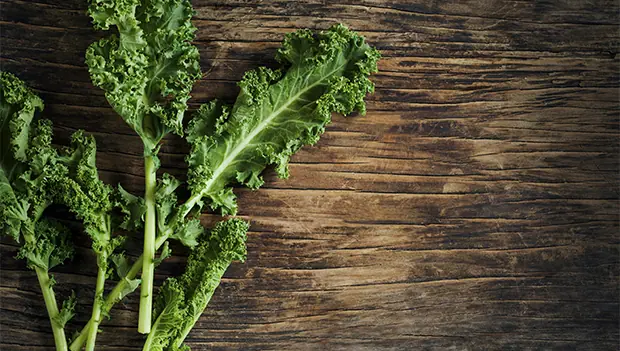
Kale
Why it's good: Kale is ranked as excellent, very good, or good for 20 different nutrients, which is why it's often referred to as a superfood. More than 45 different flavonoids serve as powerful combatants against oxidative stress and chronic inflammation and its strong anti-inflammatory properties may reduce the risk of chronic muscle soreness as well.
Kale also helps lower cholesterol thanks to high fiber content. Not to mention, it's a top source of vitamin K (1 cup provides over 1,000 percent of your daily value), which is important for bone health and blood clot regulation.
How to use: Choose kale with small leaves for a mild flavor and store it in the refrigerator for up to five days. The best way to eat kale is quickly steamed or lightly saut?ed. Put it in a smoothie or a salad if you want to eat it raw.
Strawberries
Why it's good: When total capacity was measured for vitamin C content alongside commonly consumed serving sizes of all foods, strawberries rank third. They also play an important role in cardiovascular health, improved regulation of blood sugar, and prevention of certain cancers thanks to high antioxidants and phytonutrient content.
How to use: Research has shown that strawberries can lose nutrients at a fairly rapid pace—the longer they're stored, the more substantial the nutrient loss is. Aim to use strawberries as close to purchase time as possible, preferably within two days.
Nutrient content is preserved better in higher humidity, so store your strawberries in a cold storage bin in the refrigerator where air circulation is reduced. Avoid nutrient loss and purchase frozen strawberries when they're out of season.
Serve them fresh, mix them into yogurt or add them on top of a breakfast waffle.
Related Articles:
- 7 Spring Foods That Will Help You PR
- How to Spring Clean Your Pantry
- How to Cook With Spring Produce
 Find more nutrition tips
Find more nutrition tips



